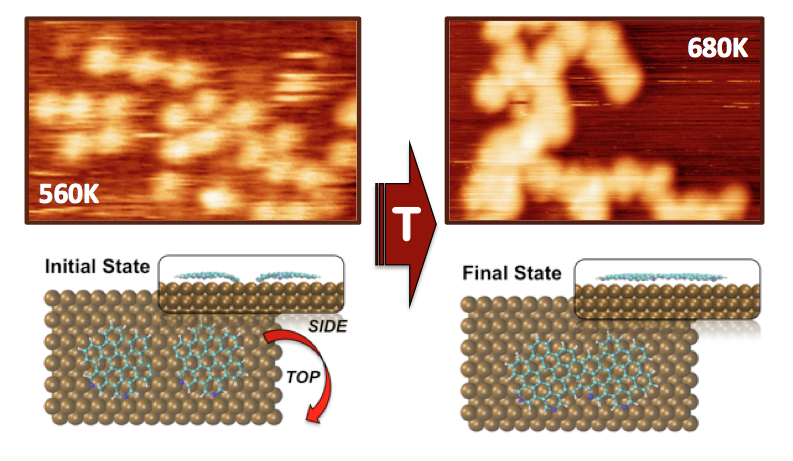New nanoarchitectures can be built from polycyclic aromatic hydrocarbons (PAH) by exploiting the catalytic properties of some metal surfaces. Actually, this bottom-up approach allows the formation of nanostructures with different dimensionality from the same precursor as a consequence of the diffusion of the PAH on the surface. Thus, by selecting the proper surface and the precursor with convenient geometry the resultant outcome can be controlled at the atomic level. In this work we study by STM, XPS and NEXAFS the structural and chemical transformations undergone by DiPy[5]DBH on three coinage surfaces, namely Cu(110), Cu(111) and Au(111). Upon annealing on-surface chemical reactions are promoted modifying the adsorbate/substrate and the molecule/molecule interactions. Thus, starting from diffusing and isolated molecules on the coinage surface, the thermal process favours the formation of polymeric nanographene chains and N-doped graphene.


